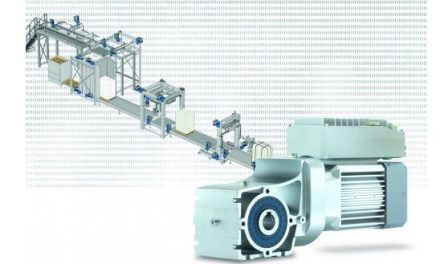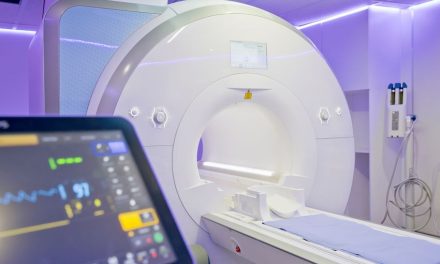 Efficiency is essential in industry today, and motor speed is the key to more efficient drives. Lenze explains why
Efficiency is essential in industry today, and motor speed is the key to more efficient drives. Lenze explains why
There is more than one way to select a motor and frequency inverter to create a variable speed drive. Rather than selecting at a setpoint of 50Hz, alternatives of choosing 87 or 120Hz can give savings in size and cost. Furthermore, the motor efficiency will be improved and the drive will be more dynamic. For many applications choosing a higher setpoint can give savings in both initial and running costs, without a penalty.
To explain how these savings arise, consider a standard AC motor connected to the mains at 50Hz. This gives a high starting torque at about 240% nominal (but a high starting current comes with it). The motor can be inefficient if it is partly loaded and, of course, the speed is fixed.
Now, add a frequency inverter and there is control of speed over a range typically five to 50Hz. However, unless fitted with a blower, overheating will occur at the bottom end and a speed range more like 20 to 50Hz is appropriate at full torque. The inverter allows response to match demand which can help reduce noise and increase comfort levels. It will also give better running efficiency if the motor is partially loaded, and allows a controllable soft start and greatly reduced starting current.
The performance of the drive is expressed in the figure below. Here, M2 is the rated torque and n2 the rated speed, for example in the case of a 3.0kW 4-pole motor M2 is 20Nm and n2 is 1445 r/min. Below n21 a self-ventilated motor needs to be derated for continuous operation with reduced torque down to a minimum speed of n22 where the available torque is M22. For a typical 3.0kW motor, M21 is 20Hz and n22 is 5Hz. If a blower is fitted the nominal torque M2 can be maintained down to 5Hz or even lower depending on the inverter. At the other end of the scale the speed n2 can be exceeded but the available torque falls sharply.
Generally increasing the motor speed leads to an increase in running efficiency. For the same 3.0kW 4-pole motor, typical efficiencies are:
50Hz 85.5%
87Hz 88.5%
120Hz 88.7%
This indicates a potential gain of more than 3%, a figure that compares with the well-publicised gain in efficiency from IE2 to IE3 motors of 2.2%.
An example
Variable speed drives with frequency inverters do not need to be based on a setpoint of 50Hz – and in many cases it is wasteful to do so. There are two higher speed options at 87 and 120Hz. Both offer the advantages of more power or a smaller size, reduced purchase cost, higher efficiency and better dynamics.
Selecting a motor with a setpoint of 87Hz is particularly beneficial for frame sizes 71 up to 180. Standard 4-pole motors are used with one proviso that the motor has connections for 230V Delta – this is not always the case above 4kW but usually can be supplied on request. The power available will increase by a factor of 1.7 and a standard 400V 3-phase inverter is selected at that higher power. The inverter is configured to 400V 87Hz output (V/f) and connected to the motor in Delta 230V. The motor speed and power increases by the factor of 1.7, and constant torque is available up to 87Hz.
For the 3.0kW motor example, power has now increased to 5.4kW. The rated torque remains at 20Nm but is now available from n21 = 580r/min (20Hz) to n2 = 2500r/min (87Hz), or with a blower from 145 to 2500r/min. This will allow a smaller motor frame size to be used and in some cases the additional cost of a blower will no longer be necessary because of the wider speed range available. Most machine applications use gearboxes and the ratio will need to be increased to match the higher motor speed.
The use of the 87Hz setpoint gives clear advantages. The motor frame size and purchase cost is lower, efficiency is higher, and using a higher ratio gearbox gives a big gain in starting torque. The smaller size leads to reduced inertia and therefore increased drive dynamics. The 87Hz motor running at 2500r/min can be compared against a 2-pole motor. Based on the same frame size 100 as the 5.4kW 87Hz motor, the 2-pole motor runs at 2860r/min but only delivers 4.0kW and a rated torque of 13.3Nm. Thus the 87Hz technology gives clear-cut benefits without extra cost.
Taking a further step up to a 120Hz setpoint can increase the benefits. Here IEC framed motors are used with some special modifications, such as the Lenze MF range. The 120Hz frequency means that the motor runs with a rated speed n2 of around 3500r/min, not a great deal higher than a standard 2-pole motor. In practice a 4-pole motor is specially wound for 120Hz operation with a 400V supply. The motor is also modified for the higher speed with optimised bearings and seals. The frequency inverter is standard and is selected for the higher power which increases by a factor of 2.5.
MF 120Hz motors are available from 0.55 to 22kW. In the case of the 100 frame motor that was rated at 3.0kW at 50Hz, it now delivers 7.5kW. Rated torque is still 20Nm, but the speed range has increased again from n21 = 580r/min to n2 = 3500r/min. The increased power allows selections that are often two frame sizes smaller, for example 3.0kW is now available from an 80 frame motor. This dramatically reduces the space envelope required. 120Hz technology is best for applications with medium to high dynamics where the lower inertias are advantageous – for example, they require less energy to accelerate.
The higher speed gives further gains in efficiency well above IE2 levels. However, these motor designs fall outside the scope of international efficiency regulations which simplifies machine certification.
Varied machinery manufacturers make different use of this drive technology. A textile machinery OEM uses it to incorporate energy-efficient motors without needing to provide extra space needed for IE2 models. Another manufacturer of rotary tables is able to use one drive where previously there were two thanks to the wide speed range. For an automated warehouse the selection was based on physical size and low energy costs. For a manufacturer of gates the high dynamics with performance approaching servo levels was the deciding factor.
Performance
Selecting motors with increased speed at 87 or 120Hz is often a win-win situation. In cases where a frequency inverter is needed to vary speed, this leads to benefits of lower purchase cost and lower running costs due to increased energy efficiency. A more dynamic performance comes together with a wider speed range and higher starting torques. Availability and technical advice, together with pre-prepared drive packages, are available from Lenze.
Lenze
T: 01234 753227


